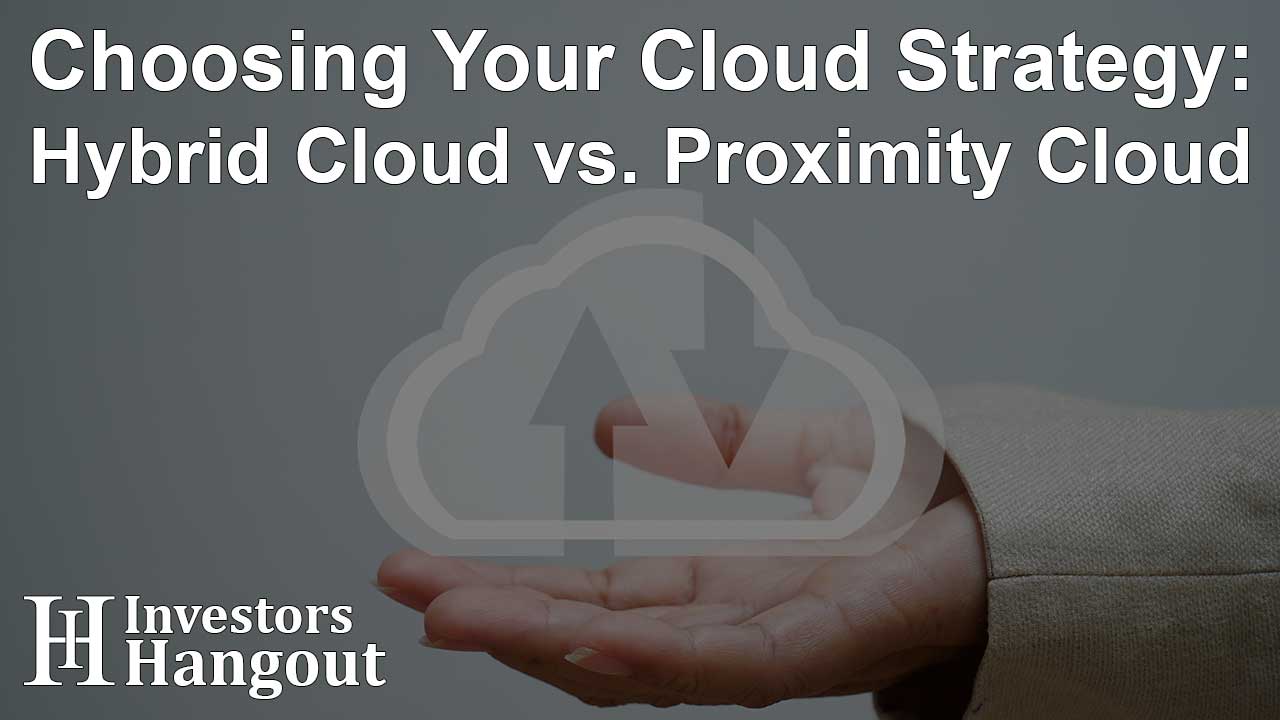Choosing Your Cloud Strategy: Hybrid Cloud vs. Proximity Cloud

Financial institutions face increasingly complex infrastructure decisions as cloud technologies evolve. Two distinct approaches—hybrid cloud and proximity cloud—have emerged as leading solutions, each addressing different operational requirements. Understanding their respective strengths enables firms to architect systems that align with specific workload demands rather than adopting one-size-fits-all solutions.
Specialized proximity cloud service offerings have gained traction among latency-sensitive operations, while hybrid architectures continue serving firms needing gradual modernization paths. This dichotomy reflects the financial sector's diverse technological landscape, where microseconds matter for some applications while others prioritize flexibility above all else.
Defining the Architectural Approaches
Hybrid cloud blends on-premise infrastructure with public cloud resources, creating a unified operating environment. Proximity cloud positions computing power within colocation facilities adjacent to exchanges and liquidity pools. These fundamentally different models cater to opposing priorities—the former emphasizes adaptability, the latter focuses on raw performance.
Performance Characteristics Compared
Execution speed separates these approaches most dramatically. Proximity solutions deliver sub-millisecond access to market data feeds and order entry systems. Hybrid environments typically add 2-5 milliseconds of latency but compensate with greater resource elasticity. High-frequency trading algorithms demand the former, while portfolio rebalancing tools may benefit more from the latter's scalability.
Security and Compliance Considerations
Regulatory requirements often dictate infrastructure placement. Hybrid models allow sensitive client data to remain on controlled systems while leveraging cloud capacity for analytics. Proximity deployments must still meet financial service security standards despite residing outside corporate data centers. Each approach requires distinct encryption and access control implementations.
Cost Structures and Economics
Capital expenditure dominates proximity cloud adoption, with physical infrastructure requiring significant upfront investment. Hybrid models shift costs toward operational expenditure, paying for cloud resources as consumed. The total cost of ownership varies dramatically depending on utilization patterns—high-volume trading operations justify proximity costs, while variable workloads favor hybrid flexibility.
Workload-Specific Recommendations
Market making and arbitrage strategies typically require proximity's speed advantages. Risk management systems and back-office processing often thrive in hybrid environments. Surprisingly, some analytics workloads benefit from proximity architectures when processing real-time data streams, challenging traditional assumptions about cloud usage.
Network Topology Differences
Hybrid clouds rely on software-defined networking to bridge locations securely. Proximity solutions optimize physical routing at the exchange level, minimizing hops between systems. These architectural distinctions become crucial when designing fault-tolerant systems that must maintain performance during volatile market conditions.
Migration Pathways Contrasted
Transitioning to hybrid infrastructure can occur gradually, system by system. Proximity adoption usually requires coordinated big-bang migrations due to physical deployment constraints. This difference significantly impacts project planning, with hybrid allowing iterative refinement while proximity demands comprehensive upfront design.
Future-Proofing Considerations
Hybrid architectures adapt more readily to emerging technologies like quantum computing and AI-driven analytics. Proximity solutions excel at evolving within their specialized domain, with providers continuously refining low-latency capabilities. Strategic planning must weigh immediate needs against anticipated technological shifts.
Making the Strategic Decision
No universal "best" solution exists—only the most appropriate choice for specific requirements. Firms should analyze workflows based on latency sensitivity, data gravity, compliance mandates, and growth projections. Many ultimately implement both models for different functions, creating a mosaic architecture that plays to each approach's strengths.
The financial sector's infrastructure landscape continues diversifying to meet specialized demands. Rather than viewing hybrid and proximity clouds as competitors, forward-thinking firms treat them as complementary tools—each solving distinct problems within modern trading ecosystems. This nuanced understanding separates tactical technology decisions from truly strategic infrastructure planning.
About The Author
Contact Owen Jenkins privately here. Or send an email with ATTN: Owen Jenkins as the subject to contact@investorshangout.com.
About Investors Hangout
Investors Hangout is a leading online stock forum for financial discussion and learning, offering a wide range of free tools and resources. It draws in traders of all levels, who exchange market knowledge, investigate trading tactics, and keep an eye on industry developments in real time. Featuring financial articles, stock message boards, quotes, charts, company profiles, and live news updates. Through cooperative learning and a wealth of informational resources, it helps users from novices creating their first portfolios to experts honing their techniques. Join Investors Hangout today: https://investorshangout.com/
